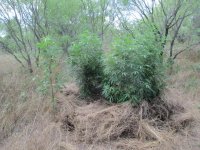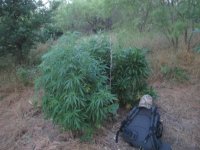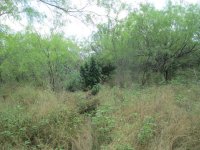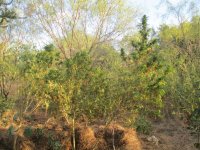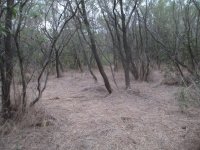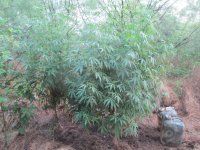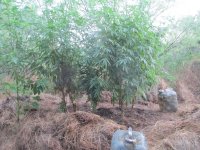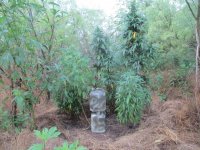This years excessive heat and the lack of colder/rainy days burnt my weed to death. I germinated some new seeds as it's not too late. This time i am going to plant them close to trees or bushes so they are protected from the sun. From which direction should it be covered? North, East, South or West? My guess is shadow from South, but i am really unsure. If anyone tried this before, what is your point/opinion?
-
ICMag with help from Landrace Warden and The Vault is running a NEW contest in November! You can check it here. Prizes are seeds & forum premium access. Come join in!
You are using an out of date browser. It may not display this or other websites correctly.
You should upgrade or use an alternative browser.
You should upgrade or use an alternative browser.
Outdoors burnt to death. Where to replant?
- Thread starter s0me1
- Start date
well I'm north of the equator, putting the sun in the south. I wouldn't want shade though. I would want more water. Low lying land near bodies of water give plants chance to send a root down for moisture.
I have a very dry spot on top of a slag heap. They don't burn, they just remain very stunted. Like a few inches growth all season. It must be very hot and dry where you are. Like a desert.
I have a very dry spot on top of a slag heap. They don't burn, they just remain very stunted. Like a few inches growth all season. It must be very hot and dry where you are. Like a desert.
They literally went crusty dry within a few days, no matter if i watered them. Anyways, i am not even close to a desert.I have a very dry spot on top of a slag heap. They don't burn, they just remain very stunted. Like a few inches growth all season. It must be very hot and dry where you are. Like a desert.
I'll check around for lower spots with more water. Wish me GL! Thanks yall!
GL! 
Think water courses. Valleys. Quarries. If nowhere near desert, was the land shaped by glacier? Such movements leave gravel along the valley floors. This can lead to extraction for the construction industry. Lowering valley floors lower still, and leaving lakes. For a few years I was wading. Not to an island, but along banks. Remote places still attract dog walkers. Establish where the paths are. On the whole, people follow paths, rather than make a new one. Only leaving one to pee, fish or bird watch.
Big thing fish watching.
Think water courses. Valleys. Quarries. If nowhere near desert, was the land shaped by glacier? Such movements leave gravel along the valley floors. This can lead to extraction for the construction industry. Lowering valley floors lower still, and leaving lakes. For a few years I was wading. Not to an island, but along banks. Remote places still attract dog walkers. Establish where the paths are. On the whole, people follow paths, rather than make a new one. Only leaving one to pee, fish or bird watch.
Big thing fish watching.
GL!
Think water courses. Valleys. Quarries. If nowhere near desert, was the land shaped by glacier? Such movements leave gravel along the valley floors. This can lead to extraction for the construction industry. Lowering valley floors lower still, and leaving lakes. For a few years I was wading. Not to an island, but along banks. Remote places still attract dog walkers. Establish where the paths are. On the whole, people follow paths, rather than make a new one. Only leaving one to pee, fish or bird watch.
Big thing fish watching.
Not even glaciers
There is a lot of truth in this comment anyway. The main problem is the quality of soil around the water sources nearby. I already had a plan, but your speech made me think out a second one, which might be much better but guess who will go out for some touring tomorrow, inspecting some areas. I hope it will work out, but in the worst case i still got the first option. THX again.
You need to work your plots in the Fall and Winter by adding a lot of organic matter in the ground. Then when Spring comes you put out plants with 5 to 7 leaf nodes. When the temps. start getting hot you add hay or grass mulch and keep the ground cooler. Here where I have grown, In August the temps run 102f or 38.8c or more and the plants can only live under MULCH!!!!!
Attachments
Last edited:
You need to work your plots in the Fall and Winter by adding a lot of organic matter in the ground. Then when Spring comes you put out plants with 5 to 7 leaf nodes. When the temps. start getting hot you add hay or grass mulch and keep the ground cooler. Here where I have grown, In August the temps run 102f or 38.8c or more and the plants can only live under MULCH!!!!!
Woah that is a good idea. Do you take the mulch away when watering? I guess the water makes mulch rot, doesn't it? It's already 35-40'c here so this one is really useful.
St. Phatty
Active member
This years excessive heat and the lack of colder/rainy days burnt my weed to death. I germinated some new seeds as it's not too late. This time i am going to plant them close to trees or bushes so they are protected from the sun. From which direction should it be covered? North, East, South or West? My guess is shadow from South, but i am really unsure. If anyone tried this before, what is your point/opinion?
I plant or do compost on the North East side of trees, so that in the afternoon, when the sun is in the Southwest and it gets hot, my plants/ compost are in the shade.
Also I suggest covering the soil with some light colored leaves that don't soak up the moisture. So they can shade the seedlings, but aren't so heavy. So the seedling can get a little light under a few areas of leaves, and then poke through when they're big enough.
I did an experiment, starting some seeds on the hottest day when it was 110+, and the seeds were protected. They are now seedlings after about 7 days.
When I watered, I just moved the mulch to the side by hand, and deep watered them with 5 gal cans, and then returned the dry mulch on top of the ground. I added new mulch every time it got low or thin. When I knew a rain was coming, I would haul ass to the plants and remove the mulch to catch the super rains, and then return to put the mulch back, I never let the sun hit the soil. Over 30 years this worked well for me. Good luck and happy gardening. 

